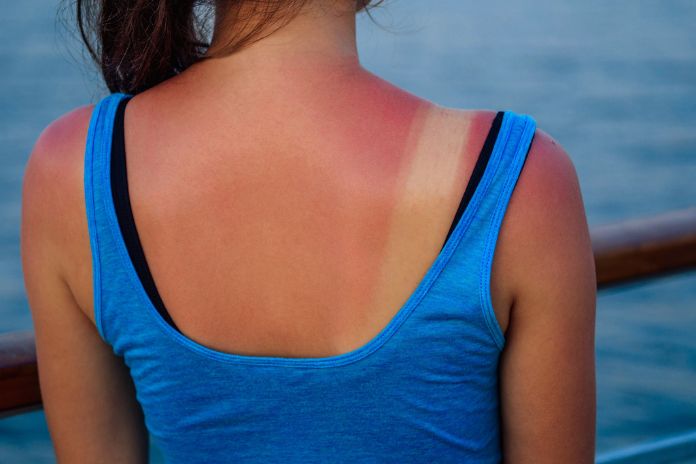As the warm season approaches, with its bright days and the desire to enjoy the sun and the sea, there is a need to prevent and treat rashes and sunburns. These are not mere annoyances but real skin lesions caused by the action of UV rays.
It should be remembered that prolonged exposure to the sun can cause redness, irritation, pain and even burns. Year after year, the repetition of wrong behaviors causes serious and irreversible damage to the skin, from premature aging to the appearance of unsightly spots up to favoring, in the most serious cases, the onset of melanomas.
Here Are Five Helpful Tips On How To Prevent And Treat Sunburn
Causes And Factors That Favor The Appearance Of Sunburn
As is known, each person has different phototypes, distinguished by the amount of melanin produced by the epidermis. This is the pigment that protects the skin from the effects of UV rays, producing the pleasant phenomenon we call tanning.
In dermatology, six prototypes are distinguished about skin color, eyes and hair. Subjects characterized by black hair, eyes, and olive skin have a greater quantity of melanin and are better protected from the aggression of the sun. Conversely, those with milky and freckled skin, generally accompanied by blond or brown hair and light eyes, risk ending the day with redness and sunburn.
How To Prevent And Relieve Sunburn
Whatever phototype you belong to, you must always respect a few simple rules useful for counteracting the harmful action of UV rays. These simple indications constitute
Expose yourself to the sun gradually, with preventive sessions of 15/20 minutes at a time.
Protect the skin with high protection factor sunscreens to be spread several times, especially during bathing. Avoid sunbathing during the day’s hottest hours, between 10 am and 4 pm.
This is especially important advice for children and infants. Wearing visor hats, goggles and light, breathable clothing is very useful if you want to stay longer on the beach or go out in the middle of the day. Prefer foods rich in beta-carotene, such as carrots and yellow-fleshed fruits, which stimulate the epidermis to produce melanin.
Erythema, Scalds And Burns: How To Identify Severity And Symptoms
Distinguishing between rashes and burns, promptly recognizing the symptoms and knowing what to do about sunburn is the main road to a speedy recovery. If the skin is red and itchy, we are dealing with sunburn. The fact that his symptoms are rather mild should not mislead him: it is still a lesion to be treated appropriately. When this lesion affects deeper layers of the skin, we speak of sunburn or burns, characterized by dryness and exfoliation of the skin, often accompanied by blisters, blisters and painful pimples.
The skin is also very inflamed, hot and sensitive to the touch. If large areas of the body are affected, headaches, high fever, and nausea may occur. Excessive exposure to the sun can be associated with sunstroke and heat stroke, which compromise the entire body’s health. It is, therefore, up to the doctor to define the clinical picture and intervene with anti-inflammatories, antipyretics and painkillers.
Sunburn: Remedies And Good Habits
What to put on sunburn? In case they have already occurred, oils and creams with intense soothing, nourishing and moisturizing action are available in pharmacies to accelerate healing. Products are rich in precious natural ingredients such as mallow, emollient and antioxidant, healing calendula and aloe vera, whose antibacterial and antiseptic properties are universally recognized.
In these cases, the pharmacist can offer valuable advice and indicate what to put on sunburn. It is also advisable to drink plenty of water to relieve sunburn and eat foods containing vitamins A, E, and C and antioxidants that help rehydrate the skin quickly. Watermelons, kiwis, pineapples, and oranges are rich in them, as are tomatoes and spinach.
Mistakes To Avoid
It is not recommended to go to the sea or expose yourself to UV rays in the days following the appearance of skin lesions. Scratching or rubbing the skin with the towel can lead to further irritation and redness. After a bath or shower, however, it is advisable to dab the skin gently, using sponges or soft fabrics. Manipulating or breaking bubbles and blisters increases the risk of infection and can inflame the skin already stressed by sunburn and sunburn.
Conclusions
The skin is a delicate and very important organ for the health of the whole organism. It is our first barrier against pathogens. It intervenes in the regulation of body temperature. It is the seat of innumerable nerve endings. His well-being is, therefore, essential. It would help if you always remembered this when you exposed yourself to the sun.
The beauty of a tan, the beneficial caress of the sun, and the relaxation that a day at the beach can give us must be accompanied by prudent behavior and respect for those simple rules that make the sun a precious ally.
Also Read: How To Improve Gut Health?

